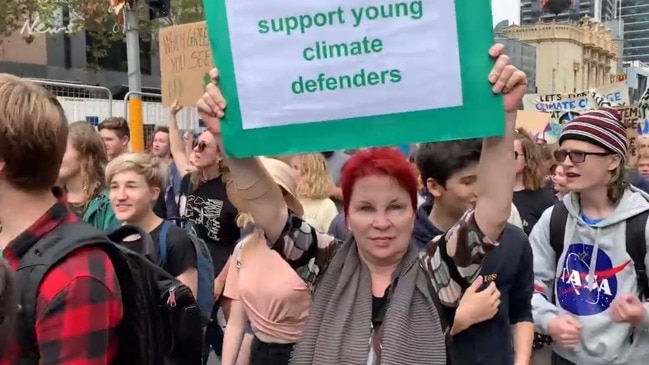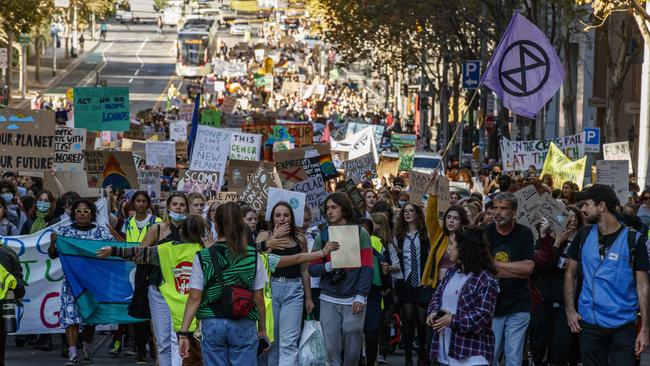Students ditch class for climate in nationwide strike
Victorian pupils will walk out of class next week, demanding urgent climate change action and net zero emissions by 2030.

Education
Don't miss out on the headlines from Education. Followed categories will be added to My News.
Victorian students will be among thousands of school kids around the country ditching their classes in a nationwide climate strike next week.
From Friday March 25, students will descend on Melbourne’s CBD for a four-day protest to call for a halt on oil and gas projects, including a stop to the contentious Adani mine.
Organisers of the youth-led movement School Strike 4 Climate movement say they will be walking out of their classrooms and storming the streets of the city to demand action from politicians about what they have dubbed a climate crisis.
The group’s primary demands include reaching net zero emissions by 2030, a move to 100 per cent renewable energy and exports by the same year, as well as financial support and employment for those working in the fossil fuel industry.

But a plan released by Prime Minister Scott Morrison and Industry, Energy and Emissions Reduction Minister Angus Taylor in October last year aims to slash net emission to zero two decades later, by 2050.
The group’s website details that students across all ages and year levels are slated to participate in the event around Australia, including at strikes in Geelong and Bright on the same day.
“United by our concern for the future of the planet that we live in, we have bridged the thousands of kilometres that separates us to create one of the biggest movements in Australian history,” the site said.
The renewed push for government intervention to stem the impacts of climate change follows the group’s nationwide strike in May last year, when demonstrations also closed off busy streets in every capital city in the country.
Thousands of students gathered at Treasury Gardens before snaking through the CBD in a crowd curbed by social distancing measures and Covid restrictions.
In 2019, a much larger crowd blocked off busy city intersections as part of a similar demonstration that drew an estimated 300,000 student protesters to the streets of the country’s state capitals.




